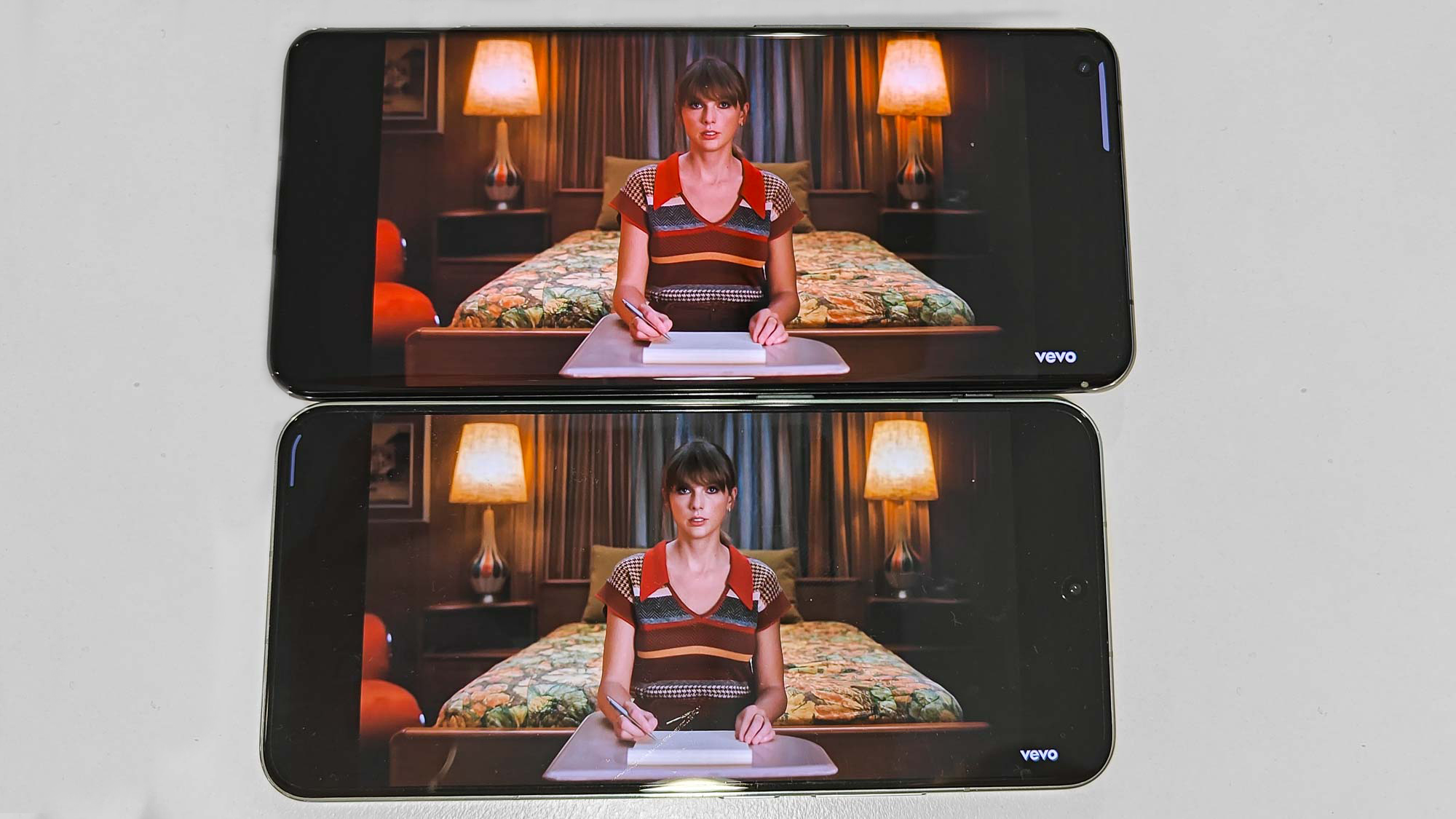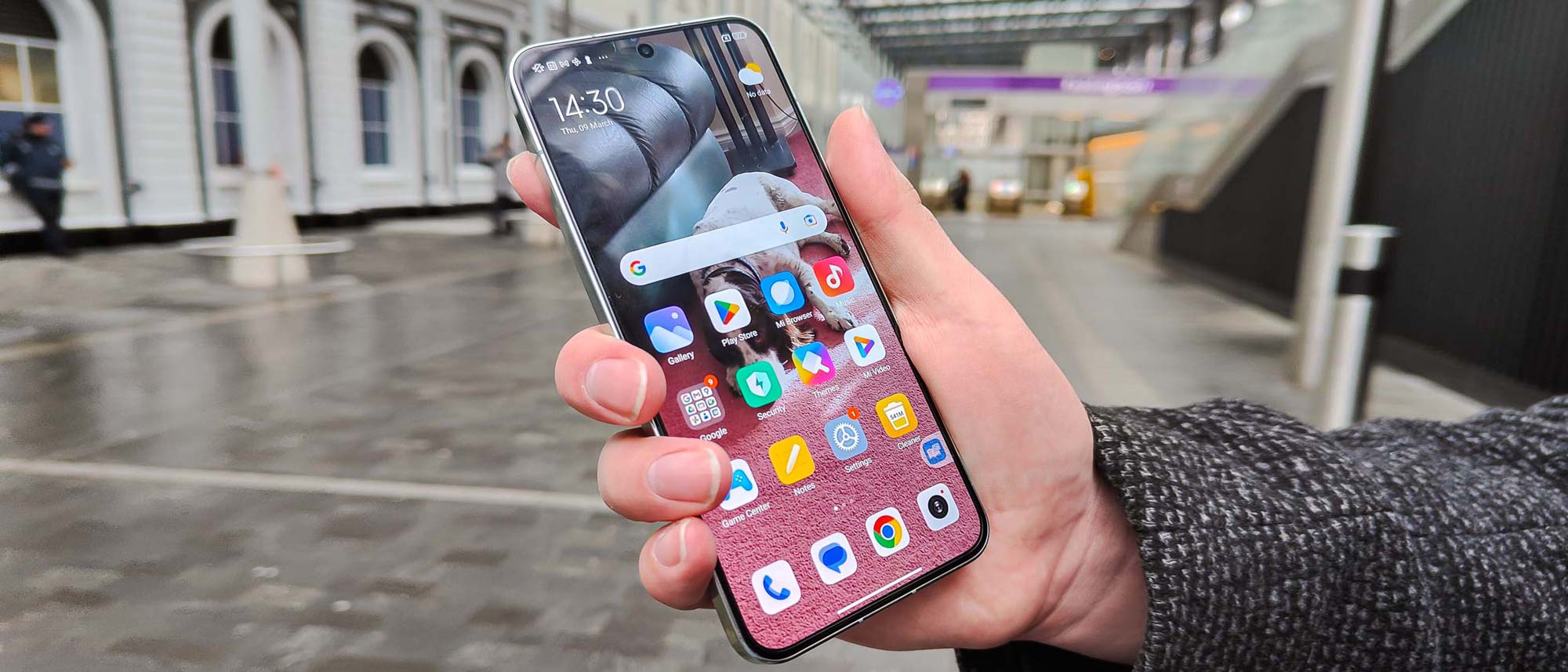Tom's Guide Verdict
There's a lot to like with the Xiaomi 13, which looks great and is powered by a battery that you'll struggle to drain. U.K. users looking for top performance will want to turn to the Galaxy S23 and its optimized Snapdragon silicon, though.
Pros
- +
Sleek and stylish design
- +
Great battery life
- +
Solid rear cameras
Cons
- -
Not available in U.S.
- -
Gaming performance needs work
Why you can trust Tom's Guide
The Xiaomi 13 is a stylish flagship phone with a Leica-engineered camera and steady all-around performance. As the baby brother to the impressive Xiaomi 13 Pro, this was always going to be the case, but does the Xiaomi 13 do enough to stand on its own two feet?
That's what our Xiaomi 13 review sets out to reveal. With no U.S. release likely for this phone, we'll also consider whether American users are missing out with the Xiaomi 13.
Xiaomi 13 review: Specs
| Starting price | £849 |
| Display | 6.3- inch AMOLED (2400 x 1080) |
| Refresh rate | 1-120Hz adaptive |
| Main cameras | 50MP main (f/1.8) 12MP ultrawide (f/2.2) 10MP (f/2.0) telephoto with 3.2x optical zoom |
| Front camera | 32MP (f/2.0) |
| Chipset | Snapdragon 8 Gen 2 |
| RAM | 8GB/12GB |
| Storage | 128GB/256GB |
| Battery | 4.500 mAH |
| Charging | 67W wired, 50W wireless |
| Software | Android 13 with MIUI |
| Size | 6 x 2.8 x 0.31 inches (152.8 x 71.5 x 7.98 mm) |
| Weight | 6.6 ounces (189grams) |
| Dust/water resistance | IP68 |
Xiaomi 13 review: Price and availability
As noted at the outset, there are no plans for a U.S. release of the Xiaomi 13, the Xiaomi 13 Pro or the newly announced Xiaomi 13 Ultra. This is not a surprise considering the Xiaomi 12 Pro also failed to make its way stateside, but it remains a disappointment that Xiaomi's top phones have such limited availability. At least U.K. users are able to easily track down the Xiaomi 13.
While the Xiaomi 13 Pro goes up against the likes of the Samsung Galaxy S23 Ultra, the £849 Xiaomi 13 has its sights set on less pricey flagships. Think of this phone as a rival to the OnePlus 11, Samsung Galaxy S23 and Google Pixel 7 Pro. The Xiaomi 13 costs as much as Google's phone, but it's £50 cheaper than the S23 and OnePlus 11.
Xiaomi 13 review: Design
One of the most striking aspects of the Xiaomi 13 is how the phone looks. In particular, its new Flora Green color really catches the eye. (Black and white color options are also available.) The phone's aluminum sides and rounded corners remind me of the iPhone, a strong source of inspiration. The look is helped by impressively slim bezels of just 1.63mm and flat edges.

Xiaomi’s 6.3-inch display is noticeably smaller than the OnePlus 11’s 6.7-inch panel but then so is the phone itself. The Xiaomi 13 measures 152.8 x 71.5 x 78.98 mm, so it's shorter and thinner than its rival. The compact size and flat design also makes the Xiaomi 13 a better fit in pockets than the OnePlus 11.
When it comes to durability, the Xiaomi 13 leaves some room for improvement. On the front, it only features Gorilla Glass 5, unlike the tougher Gorilla Glass Victus you'll find on the Pixel 7 Pro and OnePlus 11. Xiaomi's phone is still sturdy, though, offering 1.2 meters of drop protection. And an IP68 rating — the same as what you get with the Pixel and an improvement over the OnePlus 11's IP64 rating — provides effective protection against dust and up to 30 minutes of safety in around 1.5 meters of water.
Xiaomi 13 review: Display
Other phones like the OnePlus 11 have a sharper picture than the Xiaomi 13's 2400 x 1080 resolution. The Galaxy S23's 2340 x 1080 screen is roughly similar, though. The Xiaomi 13 has a max refresh rate of 120Hz but after staying idle on the same screen, it drops down to save power. There is no adaptive refresh rate but it is easy to switch between 60Hz and 120Hz manually.
Get instant access to breaking news, the hottest reviews, great deals and helpful tips.
When navigating the phone's MIUI operating system, colors pop and the resolution is sharp, but when watching YouTube on the Xiaomi 13, it becomes clear the picture quality isn’t quite as good as others at this price.

For example, watching the music video for Taylor Swift’s song Anti-Hero side by side with the OnePlus 11 (top), the Xiaomi 13 (bottom) looked slightly washed out, even more so when expanding the video to fit the whole screen. After enabling “Super resolution” on the Xiaomi 13 and the AI HDR enhancement setting, the picture warmed up significantly but still was second best behind the OnePlus 11.
Xiaomi 13 review: Cameras
Engineered in tandem with lens experts Leica, the three rear cameras on the Xiaomi include a 50MP main lens, a 12MP ultrawide lens, and a 10MP telephoto lens. That latter camera offers a 3.2x optical zoom when you want to get close to what you're shooting. Up front, you get an impressive 32MP selfie camera that trumps the OnePlus 11's 16MP offering, at least on paper.
To see how the Xiaomi 13's camera output compares to that of the best camera phones, I grabbed the Xiaomi handset along with a OnePlus 11 and started shooting.
In this shot of the Little Venice area of London, it's difficult to distinguish between the Xiaomi 13 and OnePlus 11. The blue sky on the OnePlus shot looks slightly richer, but aside from that, the photos are pretty much identical. Both phones do a good job of the near and far objects in frame and handle the reflections well.
With these rainbow colored banners, the OnePlus has definitely taken the better shot, but both devices distinguish clearly between the gradient of colors. The shadows are also impressive in both shots.
These two ultrawide photos are very similar but you can still spot some differences. The OnePlus 11 has taken a slightly brighter image, and if you look at the bench in the foreground, it has more detailing than what you see in the Xiaomi 13's shot. The OnePlus' image has more depth to it, too.
When it comes to portrait mode, I definitely favor the Xiaomi 13. It crops in tighter and did a better job of blurring the background with some tasteful bokeh so that the subject could stand out. Both the Xiaomi 13 and OnePlus 11 did a great job with my shirt and the texture of my coat, though.
The selfies on both devices turned out to be as evenly matched as other photos, though I found it interesting how the Xiaomi smoothed my skin automatically. Notice the lack of the red spot on my forehead to see what I'm talking about. This airbrushed look is not something I want, so I would hand this one to the warts-and-all OnePlus selfie.
Finally, using Night mode for low-light images in my backyard, both the Xiaomi 13 and OnePlus 11 do a commendable job of lighting up the darkness and capturing the shadows on the lawn. I would argue that the OnePlus has brightened things too much, but this is a matter of personal preference.
The Xiaomi 13 is also capable of 8K video recording albeit only at 24 FPS but I was impressed by its crisp 4K 60 FPS video capabilities nonetheless.
Xiaomi 13 review: Performance
With Snapdragon 8 Gen 2 silicon, the Xiaomi 13 isn’t messing around under the hood. Paired with 128GB or 256GB of internal storage, UFS 4.0 and up to 12GB of RAM, you definitely get flagship-worthy specs from a phone worthy of the Xiaomi name.

In the Geekbench 5 general performance test, the Xiaomi 13 put in a strong showing with a multicore score of 5,066. That blew away the Pixel 7 Pro and its Tensor G2 chip as you might expect — Google's silicon emphasizes AI and not raw performance — while also beating the OnePlus 11, which is also powered by the Snapdragon 8 Gen 2. The Xiaomi 13's result also narrowly beat the Samsung Galaxy S23's multicore number.
The Xiaomi 13 didn't fare nearly as well in graphics testing where both the Galaxy S23 and OnePlus 11 posted impressive scores topping 87 frames per second in 3DMark's Wild Life Unlimited test. The Xiaomi 13's score was a more modest 67 fps, which is not going to trouble the best gaming phones.
In our real world test, we use Adobe Premiere Rush to transcode a video, timing the results. The Xiaomi 13 thrived here, posting a 40-second time that's just a second slower than the Galaxy S23. That's well ahead of the OnePlus 11, which needed 1 minute and 11 seconds to complete the task.
| Row 0 - Cell 0 | Xiaomi 13 | Galaxy S23 | OnePlus11 | Google Pixel 7 Pro |
| Geekbench 5 (single-core / multi-core) | 1037/5066 | 1525/4899 | 1160/4971 | 1066/3237 |
| 3DMark Wild Life Unlimited (score/fps) | 11,144/67 | 14591/87 | 14065/84 | 6739/40 |
| 3DMark Wild Life Unlimited Extreme (score/fps) | 2959/17.7 | 3840/23 | 3658/21 | 1790/10 |
| Adobe Premiere Rush time to transcode (mins:secs) | 0:40 | 0.39 | 1:11 | 0:46 |
Xiaomi has ensured that the Xiaomi 13 will stay fast in the future by including WiFi 7 compatibility with its new phone. This technology isn’t exactly widely available right now, but it’s nice to know the manufacturer is thinking about the phone's long-term performance as more WiFi 7-ready networking gear becomes available.
Xiaomi 13 review: Battery and charging
A 4,500 mAh battery may not be as large as the 5,000 mAh cells you find in some phones — hello, OnePlus 11 — but the Xiaomi 13 makes the most of the power pack it has. Playing a YouTube video on WiFi at full brightness, it took 8 hours and 3 minutes to go from 100% battery to 70%. In general use, I found the Xiamoi 13 can easily manage a day and still have plenty in the tank.

When charging the phone, you can expect 67W turbocharging from the Xiaomi 13 Pro. That's almost half the speed that Xiaomi 13 Pro owners enjoy, but Xiaomi still claims 65W will charge a drained phone to 100% in 38 minutes.
I also like that the Xiaomi 13 offers 50W wireless charging whether you've got the standard or Pro model. Xiaomi contends that you'll be able to charge the handset wirelessly in about 53 minutes.
A charger came included in the box but with a European plug — so UK users, make sure you have an adapter.
Xiaomi 13 review: Software and special features
Android fans may not recognize the operating system on the Xiaomi 13 at first, but after initial exploration, the similarities between MIUI 14 and Android become more obvious. In fact, after getting over the numerous Xiaomi first-party apps and bloatware (which can all be removed or hidden if you prefer), it is hard to tell the difference.
Swiping up on the Xiaomi 13 screen to view all of your open tabs produces a slightly different view, and the quick settings menu (opened by swiping down from the top of the screen) is split into two. But these are small differences from the standard Android experience.
MIUI is more of a skin for Android than a new operating system. Google’s suite of apps is all still there on launch, and you can access the same Play Store on the Xiaomi 13.
Currently, Xiaomi guarantees three years of software updates and four years of security updates for its phones, which is a bit stingy compared to Google’s three years of software updates and five years of security updates. Samsung still has some of the best policies out there with four years of updates for its One UI system and five years of security updates.
Xiaomi 13 review: Verdict
A stylish offering that also performs capably and with impressive longevity, the Xiaomi 13 is a solid choice for those who need a dependable Android device. With so many other handsets to choose from, though — including phones that match or beat the Xiaomi 13 on price — it's going to be hard to break through the crowd. The less-than-stellar gaming performance, in particular, makes it tempting to turn to the OnePlus 11 or Galaxy S23 instead.
But a stylish design and solid cameras go a long way toward making the Xiaomi 13 a viable option for those who want a premium Android phone without paying up for the Pro version.
Andy is a freelance writer with a passion for streaming and VPNs. Based in the U.K., he originally cut his teeth at Tom's Guide as a Trainee Writer before moving to cover all things tech and streaming at T3. Outside of work, his passions are movies, football (soccer) and Formula 1. He is also something of an amateur screenwriter having studied creative writing at university.

